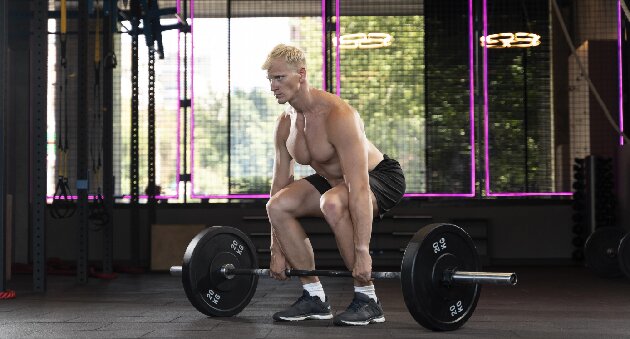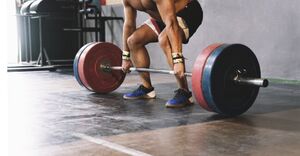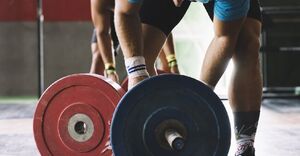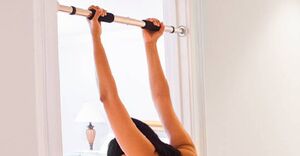
Discover 6 Specialty Barbells: From Trap Bars to Safety Squat Bars
Are you tired of using the same old standard barbells in your workout routine? It might be time to switch things up and explore the world of specialty barbells.
From trap bars to safety squat bars, these unique pieces of equipment offer a variety of benefits and can help target different muscle groups.
In this article, we will delve into the world of specialty barbells, discussing what they are, how they differ from standard barbells, the muscles they work, and the benefits of incorporating them into your workout routine.
Whether you’re an athlete looking to improve your strength or an older adult hoping to reduce joint stress, specialty barbells could be the perfect addition to your fitness regimen.
Let’s explore how to incorporate them into your workouts and avoid common mistakes along the way.
What Are Specialty Barbells?
Specialty Barbells refer to a category of unique weightlifting equipment that goes beyond the standard barbell design to offer specialized features catering to specific fitness needs and training techniques.
These barbell variations come in a wide range of designs, each tailored to different workout goals and preferences. From trap bars for hexagonal deadlifts to cambered bars for improving grip strength, the market offers a plethora of options to suit diverse needs. Specialty barbells often incorporate innovative features such as rotating sleeves, knurled handles, or variable grip widths to enhance the user’s lifting experience. Fitness enthusiasts, athletes, and gym owners can now choose from a variety of specialty fitness gear to elevate their training routines.
What Is a Trap Bar?
A Trap Bar, also known as a Hex Bar, is a specialized type of barbell that features a unique hexagonal shape with neutral grips on the sides, allowing for a different lifting technique compared to traditional straight barbells.
This innovative design helps reduce stress on the lower back and allows for a more natural movement pattern during exercises like deadlifts and shrugs. As a popular choice among fitness enthusiasts and athletes, the Trap Bar has become a staple in the weightlifting gear industry. Its versatility and ergonomic design make it a valuable fitness tool for individuals of all fitness levels looking to improve their strength and power.”
How Is a Trap Bar Different from a Standard Barbell?
The Trap Bar distinguishes itself from a Standard Barbell through its hexagonal shape and neutral grip handles, offering a more ergonomic and versatile lifting experience, especially beneficial for individuals seeking variations in their strength training routines.
This unique design of the Trap Bar places less strain on the lower back and allows for a more natural movement pattern during exercises like deadlifts and shrugs. This makes it a popular choice among weightlifters looking to reduce the risk of injury while maximizing muscle engagement.
The Trap Bar’s design caters to users of varying heights and body types, providing a comfortable and stable grip that standard barbells may struggle to offer. These factors contribute to the growing preference for Trap Bars in the fitness gear market, showcasing a shift in favor towards innovative barbell designs.
What Muscles Does a Trap Bar Work?
Using a Trap Bar engages multiple muscle groups, including the hamstrings, quadriceps, glutes, and lower back, making it an effective tool for compound movements like deadlifts and squats that target overall strength and muscle development.
These muscle groups play a crucial role in various strength workouts, as they are responsible for stabilizing and generating power during movements. The hamstrings and glutes are essential for hip extension, while the quadriceps are heavily involved in knee extension. The lower back muscles help maintain proper posture and spinal alignment throughout the exercises.
Incorporating trap bar deadlifts into your routine can lead to significant improvements in overall strength and muscle mass, making it a popular choice among weightlifters and fitness enthusiasts.
What Is a Safety Squat Bar?
A Safety Squat Bar is a specialized barbell designed with a padded yoke that sits comfortably on the lifter’s shoulders, redistributing the weight to reduce strain on the upper body during squat movements.
Known for their unique yoke design, Safety Squat Bars offer a safer and more secure squatting experience, making them a popular choice among weightlifting enthusiasts. These bars come equipped with safety features such as the ability to alleviate shoulder and back pressure, allowing lifters to focus on proper form and technique. In the realm of specialty fitness gear, Safety Squat Bars have garnered increasing attention and are now readily available in the market for individuals seeking an effective and comfortable workout tool.
How Is a Safety Squat Bar Different from a Standard Barbell?
Compared to a Standard Barbell, a Safety Squat Bar offers a more secure and ergonomic squatting experience by reducing the stress on the shoulders and lower back, making it an ideal choice for individuals looking to improve their squatting technique and overall safety during heavy lifts.
The Safety Squat Bar’s unique design helps maintain a more vertical torso position during squats, promoting better form and reducing the risk of lower back injuries. This specialized barbell also allows for a more natural grip position, which can enhance stability and control when performing various Weightlifting techniques.
The Safety Squat Bar’s cambered shape shifts the center of gravity slightly forward, encouraging a more upright posture and reinforcing proper alignment throughout the lift, leading to improved Weightlifting Benefits over time.
What Muscles Does a Safety Squat Bar Work?
The Safety Squat Bar targets key muscle groups such as the quadriceps, glutes, and core while also engaging stabilizing muscles in the upper back and arms, providing a comprehensive workout for strength development and muscle building.
Engaging in Safety Squat Bar exercises not only helps in developing lower body strength but also enhances overall muscle endurance. The quadriceps play a vital role in executing the squat movement, while the glutes contribute to hip extension. The core muscles act as stabilizers, promoting better posture and spinal alignment. The engagement of the upper back and arm muscles adds an element of resistance, making the exercise more challenging and effective for muscle building.
Incorporating variations like front squats or paused squats with the Safety Squat Bar can further intensify the workout, leading to enhanced muscle activation and growth.
What Are the Benefits of Using Specialty Barbells?
Incorporating Specialty Barbells into your fitness regimen offers a myriad of benefits, from reduced stress on joints and increased training variety to enhanced grip strength and targeted muscle engagement, elevating your strength training experience to new levels.
These Fitness Products have become increasingly popular in the Weightlifting World due to their ability to cater to specific training needs. Using Specialty Barbells allows individuals to perform exercises like squats, deadlifts, and overhead presses with more precision and focus, amplifying the effectiveness of each movement. The versatility of Specialty Barbells opens up a world of possibilities for implementing unique weightlifting techniques, leading to improvements in overall strength and muscle development.
Reduced Stress on Joints
One key benefit of incorporating Specialty Barbells like Safety Squat Bars is the significant reduction in stress on joints during exercises, particularly beneficial for individuals with prior injuries or joint discomfort.
This joint-friendly aspect plays a crucial role in injury prevention and promotes overall joint health.
Weightlifting Equipment such as Safety Squat Bars or Cambered Bars are designed to distribute the weight more evenly across the body, reducing the strain on vulnerable joints.
By using Powerlifting Gear that is specifically crafted to alleviate pressure on common areas of discomfort, lifters can enjoy a more comfortable and sustainable workout experience.
The ergonomic design and specialized features of these Specialty Barbells help lifters maintain proper form while minimizing the risk of aggravating existing injuries or developing new ones.
Increased Variety in Training
Specialty Barbells introduce a diverse range of training variations and exercise options, enabling fitness enthusiasts and professionals to explore new workout routines, challenge different muscle groups, and enhance functional training techniques.
These versatile barbells cater to a wide range of fitness levels and goals, incorporating unique features such as rotating sleeves for smoother movements and enhanced grip. With the ability to customize the load using Weight Plates, individuals can tailor their workouts specifically to their needs, whether focusing on strength training, powerlifting, or functional movements. The array of Barbell Exercises that can be performed with these specialty barbells offers a dynamic and engaging way to target specific muscle groups while improving overall stability and coordination.
Improved Grip Strength
Using Specialty Barbells can lead to notable improvements in grip strength, as the unique designs and textures of these specialized bars challenge the hands and forearms, enhancing overall grip endurance and performance in various fitness activities.
These specialty barbells are particularly beneficial for individuals looking to enhance their performance in CrossFit workouts. By incorporating these strength tools into your training regimen, you can effectively target the muscles in your hands and forearms, leading to better control and stability during weightlifting movements. The varied grip options provided by specialty barbells help improve hand strength from different angles, translating to improved performance in activities that require a strong and secure grip.
Who Can Benefit from Using Specialty Barbells?
A diverse range of individuals, including fitness enthusiasts, professionals like strength coaches and fitness instructors, gym owners, and experts in weightlifting and fitness communities, can benefit significantly from incorporating Specialty Barbells into their training programs.
These specialized barbells are designed to target specific muscle groups, enhance stability, and improve technique, making them ideal for individuals looking to take their strength training to the next level.
Fitness professionals can leverage Specialty Barbells to provide tailored workout plans for their clients, while gym owners can attract and retain members by offering unique equipment that caters to the needs of the strength community.
Athletes
Athletes from various sports disciplines can leverage the benefits of Specialty Barbells to enhance their strength, conditioning, and sport-specific performance, utilizing innovative fitness gear and weightlifting techniques to optimize their training regimes.
By incorporating Specialty Barbells into their workout routines, athletes can target specific muscle groups with precision, leading to improved power, agility, and overall athletic performance. These training tools allow fitness enthusiasts to customize their exercises according to the demands of their sport, whether it be explosive sprints in track and field, powerful swings in golf, or dynamic movements in basketball. The versatility of Specialty Barbells opens up a whole new dimension of training possibilities, catering to the diverse needs of athletes across different disciplines.
Older Adults
Older adults can benefit from using Specialty Barbells to improve their functional fitness, maintain muscle mass, and enhance bone density, utilizing specialized fitness accessories and exercise tools tailored to their age-specific needs.
By incorporating these age-appropriate Strength Equipment like Specialty Barbells into their fitness routines, older individuals can effectively combat age-related muscle loss and preserve their physical independence. The Exercise Equipment Market offers a variety of options, from lightweight barbells to adjustable ones, allowing seniors to engage in safe and efficient strength training. Regular use of such equipment not only strengthens muscles but also promotes better bone health, reducing the risk of osteoporosis and fractures. Embracing these specialized tools can help older adults lead a more active and fulfilling lifestyle.
Individuals with Injuries or Limitations
Individuals with prior injuries or physical limitations can find value in Specialty Barbells like Safety Squat Bars to engage in safe and effective strength training, utilizing supportive fitness accessories, and specialized equipment to accommodate their specific needs.
Safety features such as cushioned padding on the Safety Squat Bars can provide added comfort and reduce strain on joints, making them ideal for individuals recovering from shoulder or lower back injuries.
The equipment adaptations in Specialty Barbells allow for a more ergonomic and controlled lifting motion, promoting proper form and reducing the risk of further injury.
Incorporating Powerlifting Equipment into modified training programs can help individuals gradually build strength and confidence while minimizing the impact on vulnerable areas.
How to Incorporate Specialty Barbells into Your Workout Routine?
Integrating Specialty Barbells into your workout routine involves starting with lighter weights, prioritizing proper form, and incorporating them alongside standard barbell exercises to enhance your lifting experience and target specific muscle groups effectively.
Gradually increasing the load on your Specialty Barbells over time is essential in Powerlifting and Weightlifting Exercises to challenge your strength and promote muscle growth. Focusing on maintaining correct body alignment and engaging the targeted muscles during each repetition will help you make the most out of these Training Tools.
Incorporating a variety of exercises such as squats, deadlifts, and overhead presses with different specialty bars can add excitement and dimension to your routine, keeping your workouts engaging and effective.
Start with Lighter Weights
When integrating Specialty Barbells into your workout routine, it is essential to start with lighter weights to focus on technique, muscle engagement, and gradually build strength and endurance, using supportive fitness accessories and exercise tools for optimal progression.
This approach allows you to concentrate on refining your form and ensuring proper muscle activation before advancing to heavier loads. By starting with lighter weights, you reduce the risk of injury and create a solid foundation for more intense muscle-building workouts down the line. It’s a strategic way to prepare your body for the increased demands that come with progressing in your fitness journey.
Incorporating fitness accessories like resistance bands or lifting grips can enhance your overall workout experience and aid in better muscle targeting and development.
Focus on Proper Form
Maintaining proper form while using Specialty Barbells in your workout routine is crucial for maximizing the effectiveness of each exercise, preventing injuries, and optimizing functional movement patterns, particularly beneficial for fitness enthusiasts seeking performance enhancement.
Correcting your form when incorporating Specialty Barbells not only helps in injury prevention but also ensures that the targeted muscles are engaged properly, leading to more efficient workouts.
By focusing on form correction, Fitness Enthusiasts can enhance their overall strength and agility, ultimately boosting their performance in various functional movements.
This attention to detail promotes safer training practices and helps individuals progress steadily towards their fitness goals.
Mix and Match with Standard Barbell Exercises
Enhance your workout routine by combining Specialty Barbells with standard barbell exercises, incorporating diverse weight plates, CrossFit techniques, and strength training principles to create a well-rounded and challenging lifting regimen.
Specialty barbells offer a unique way to spice up your training routine, providing a fresh perspective on traditional movements like squats, deadlifts, and presses. By incorporating different barbell variations such as trap bars, safety squat bars, and resistance bands, you can target muscles from new angles and add variety to your workouts. Experimenting with various weight plates allows you to adjust resistance levels, challenge your muscles in unique ways, and progress steadily in your strength training journey. CrossFit methodologies can also be seamlessly integrated, enhancing functional fitness and overall athleticism.
What Are Some Common Mistakes When Using Specialty Barbells?
Avoiding common mistakes when using Specialty Barbells is crucial to prevent injuries, optimize training results, and ensure a safe and effective lifting experience, requiring attention to proper form, gradual progression, and guidance from fitness professionals or instructors.
When it comes to lifting with Specialty Barbells, having correct form is essential for targeting specific muscle groups effectively and avoiding strain. Fitness professionals emphasize the significance of maintaining a stable core and alignment throughout each movement to reduce the risk of injury.
Instructors often recommend starting with lighter weights to perfect technique before increasing the load, ensuring a solid foundation for progress. Listening to your body and seeking guidance from experienced trainers can help you master the art of using Specialty Barbells safely and efficiently.
Not Using Proper Form
One common mistake when utilizing Specialty Barbells is neglecting proper form, which can lead to reduced training effectiveness, increased injury risk, and limited muscle engagement, underscoring the importance of form correction and guidance from fitness instructors.
Improper form not only hampers the efficiency of your workout but also puts unnecessary strain on your muscles, joints, and ligaments.
Exercise tools like Specialty Barbells are effective only when used correctly, ensuring optimal muscle activation and targeted training.
Fitness instructors play a crucial role in correcting form errors, preventing injuries, and maximizing the benefits of your exercise routine.
By honing your form with their guidance, you can enhance your overall performance, prevent setbacks, and achieve your fitness goals more effectively.
Using Too Much Weight Too Soon
Another common mistake with Specialty Barbells is overloading with excessive weight prematurely, leading to compromised form, fatigue, and potential strain on joints and muscles, necessitating a gradual progression approach and attention to safety measures like using Powerlifting Equipment.
Proper technique and form are crucial when using Specialty Barbells to ensure optimal muscle engagement and prevent injuries.
Gradually increasing weight levels allows the body to adapt and strengthen over time, reducing the risk of overexertion.
Safety precautions such as wearing appropriate lifting gear like wrist wraps, belts, and knee sleeves can provide added support and stability during heavy lifts.
Powerlifting Equipment also plays a vital role in injury prevention by offering additional reinforcement for the body’s structural integrity.
Remember, patience and consistency are key in the journey to strength development with Specialty Barbells.
Not Adjusting the Bar Properly
Failing to adjust the Specialty Barbells correctly for individual comfort and grip stability can lead to suboptimal lifting mechanics, discomfort, and potential performance limitations, highlighting the importance of proper bar adjustments and the use of supportive exercise accessories.
It’s crucial to consider ergonomic factors when setting up the barbell, as improper adjustments can strain muscles and joints, increasing the risk of injuries over time. Optimal grip optimization not only enhances your lifting technique but also promotes better overall biomechanics. Utilizing weightlifting gear such as lifting straps or chalk can provide additional support, ensuring a secure grip and reducing the likelihood of the bar slipping during lifts, thus empowering you to lift heavier weights efficiently and safely.
External Resource:




No Comments